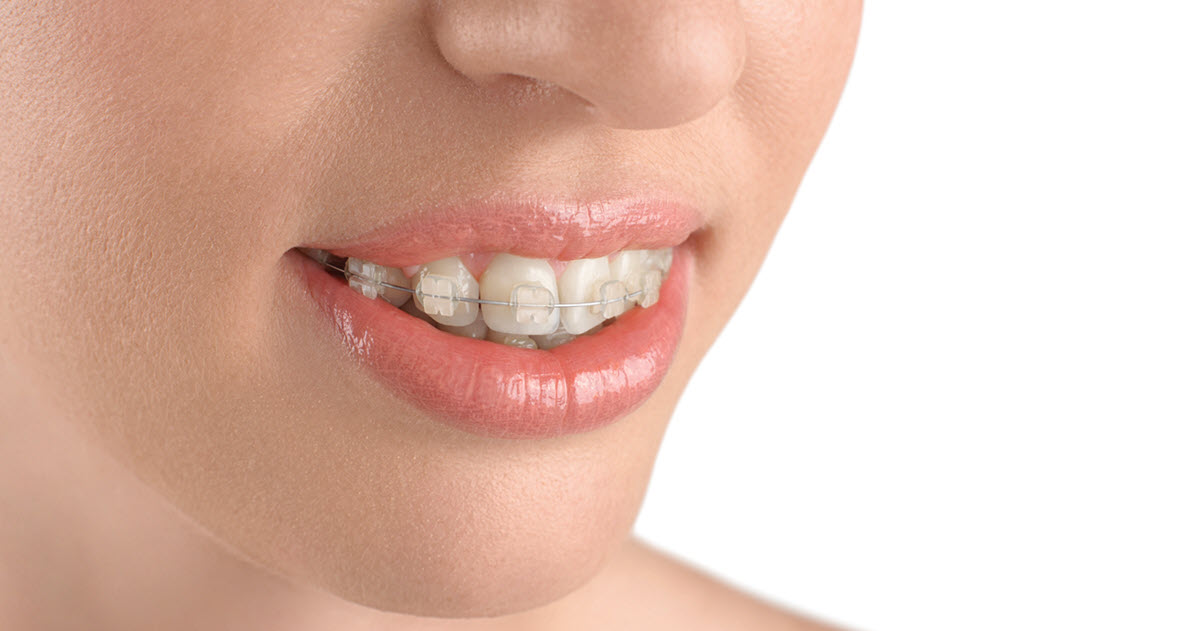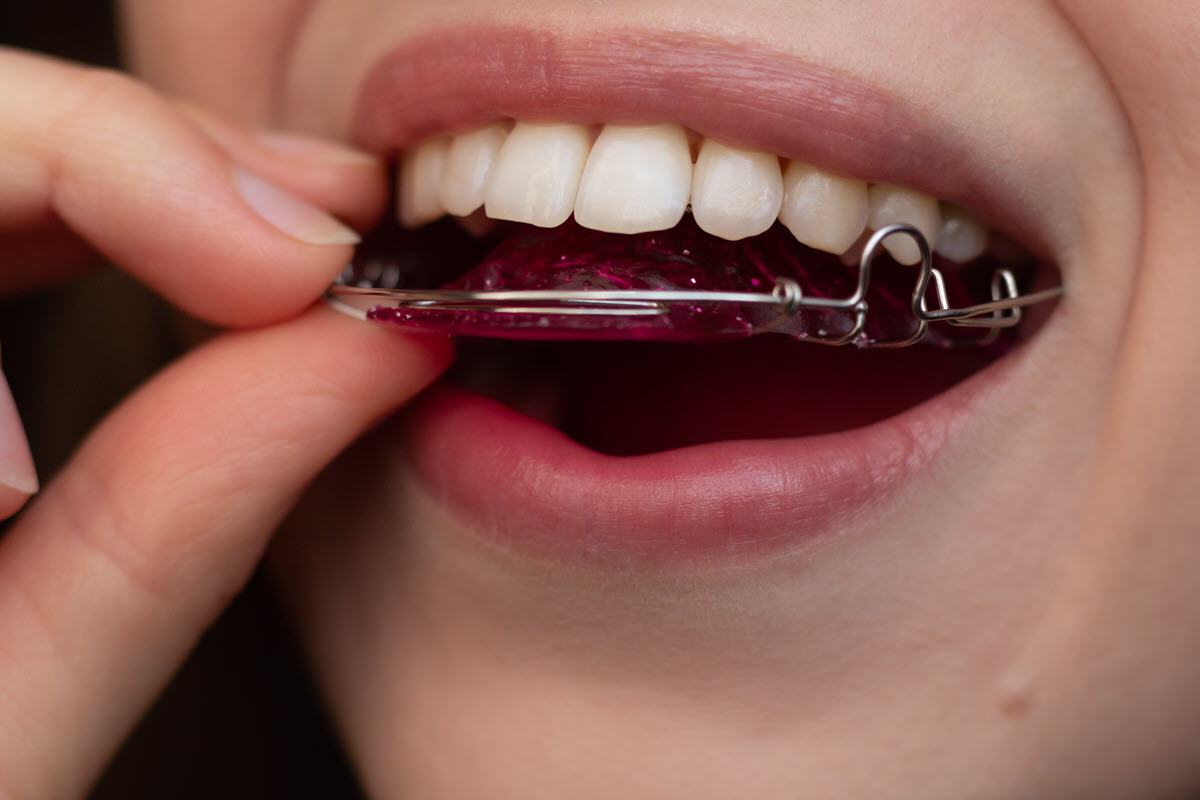If you’re considering braces to straighten your teeth, you may have heard about ceramic braces. But what exactly are they, and are they the right choice for you?
In this article, we’ll explore everything you need to know about ceramic braces, including their benefits, drawbacks, and whether they are the right option for your orthodontic treatment.
What Are Ceramic Braces?
Ceramic braces are a type of orthodontic treatment that uses clear or tooth-colored brackets and wires to straighten teeth. They work in the same way as traditional metal braces, but the brackets and wires are less noticeable, making them a popular choice for adults and teenagers.
How Do They Work?
Ceramic braces work by applying gentle pressure to your teeth, gradually shifting them into the desired position. The brackets are bonded to the front of your teeth, and the wires are threaded through them, creating tension that moves your teeth.
The treatment process typically takes 18-24 months, depending on the severity of your case. During this time, you will need to visit your orthodontist regularly for adjustments to ensure your teeth are moving correctly.
Benefits of Ceramic Braces
Aesthetics

One of the most significant benefits of ceramic braces is their aesthetic appeal. The brackets and wires are designed to blend in with your teeth, making them less noticeable than traditional metal braces. This is especially appealing for adults who may feel self-conscious about wearing braces.
Comfort
Ceramic braces are designed to be more comfortable than metal braces. The brackets are smaller and smoother, reducing the risk of irritation to your cheeks and gums. The wires are also thinner, making them less noticeable and more comfortable to wear.
Durability
Ceramic braces are made from strong and durable materials, making them less likely to break or become damaged during treatment. This means you can continue your daily activities without worrying about your braces.
Effective for Complex Cases
Ceramic braces are just as effective as metal braces in treating complex orthodontic cases. They can correct issues such as overcrowding, gaps, and misaligned bites, making them a suitable option for many patients.
Drawbacks of Ceramic Braces
Cost
Ceramic braces tend to be more expensive than traditional metal braces. This is because the materials used are more expensive, and the treatment process may take longer. However, many orthodontists offer payment plans to make the cost more manageable.
Staining
While the brackets and wires of ceramic braces are designed to be tooth-colored, they can become stained over time. This is especially true if you consume foods and drinks that are known to stain teeth, such as coffee, tea, and red wine. To prevent staining, it’s essential to maintain good oral hygiene and avoid these foods and drinks as much as possible.
Fragility
Ceramic braces are more fragile than metal braces, meaning they can break or become damaged more easily. This is why it’s crucial to follow your orthodontist’s instructions carefully and avoid eating hard or sticky foods that can damage the brackets and wires.
Are Ceramic Braces Right for You?
Whether ceramic braces are the right choice for you will depend on your individual needs and preferences. Here are some factors to consider when deciding if ceramic braces are the best option for your orthodontic treatment.
Severity of Your Case
Ceramic braces are suitable for most orthodontic cases, but they may not be the best option for severe or complex cases. Your orthodontist will be able to assess your case and recommend the best treatment option for you.
Aesthetic Concerns
If you are self-conscious about wearing braces, ceramic braces may be a better option for you than traditional metal braces. They are less noticeable and can help you feel more confident during your treatment.
Budget
As mentioned earlier, ceramic braces tend to be more expensive than metal braces. If budget is a significant concern for you, it’s worth discussing payment options with your orthodontist to see if ceramic braces are a viable option for you.
Lifestyle Factors
If you play sports or a musical instrument, you may need to consider how braces will affect these activities. Ceramic braces may be a better option for athletes or musicians who need to wear a mouthguard or play an instrument that requires a lot of mouth movement.
Alternatives to Ceramic Braces
If ceramic braces are not the right choice for you, there are other options available. These include:
Traditional Metal Braces
Traditional metal braces are the most common type of orthodontic treatment. They are made from metal brackets and wires and are highly effective in treating a wide range of orthodontic issues.
Pitts21 Brackets
Pitts21 offers an alternative to traditional metal braces due to their unique design. Self-ligating braces, such as Pitts21, offer patients several advantages throughout their treatment. So, what is Pitts21? It’s a system that delivers consistent results in dental realignment using self-ligating bracket technology that is faster and more accurate than other brands.
Invisalign
Invisalign is a popular alternative to braces that uses a series of clear aligners to straighten teeth. They are removable, making them a convenient option for those who want to be able to eat and drink without restrictions during treatment.
Takeaways
Ceramic braces are a popular choice for those who want a more discreet orthodontic treatment option. They offer many benefits, including aesthetics, comfort, and durability, but they may not be suitable for everyone. It’s essential to discuss your options with your orthodontist to determine the best treatment plan for your individual needs.
If you’re considering ceramic braces, be sure to consult with a reputable orthodontist who has experience with this type of treatment. With proper care and maintenance, ceramic braces can help you achieve a straighter, healthier smile.




